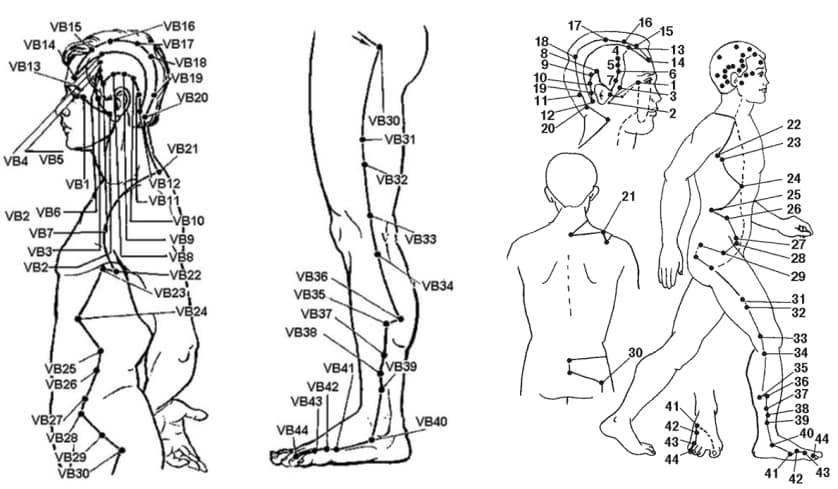
The Gallbladder Meridian (VB)
The gallbladder meridian belongs to the system of Yang meridians. Its pair is the liver meridian, and its element is tree. It receives energy from the meridian of the triple heater and transmits to the meridian of the liver and the foot over 44 points. The maximum activity of the gallbladder meridian is from 11:00 pm to 1:00 am, whereas its minimum activity is from 11:00 am to 1:00 pm.
Functions of The Gallbladder Meridian
Responsible for all movements that occur in the human body (joints, muscles, blood, lymph, heart contraction).
The Gallbladder Meridian performs the function of accumulation of bile. Bile is produced by the liver, passes into the intestines and promotes the assimilation of food.
It begins at the outer corner of the eye on the right, descends along the side of the head, passes along the neck, along the front side of the lateral surface of the trunk and reaches the groin. From the groin it has a branch to the buttocks and descends along the lateral surface of the thigh, knee joint, shin. The meridian ends at the fourth toe.

Symptoms and Diseases Related to the Imbalance of The Gallbladder Meridian
Signs of redundancy
Bitterness in the mouth; a feeling of fullness in the stomach; nausea; swelling of the neck cheeks and chin; throat diseases; headaches; insomnia; pain and cramps in the thigh and lower leg; the foot feels hot when touched.
A sign of insufficiency
Lack of strength and energy; weakness; swelling of the popliteal fossa and the foot area; swelling in the joints of the lower extremities.
Jaundice of the sclera; eye diseases.
Vomiting with bile; sweating at night; drowsiness; heavy and deep sighs.
Diseases of The Gallbladder Meridian
Diseases associated with the meridian of the gallbladder: sensitivity of the legs; paralysis of the lower extremities; joint pain; arthritis of the knee joint; polyneuritis; itchy dermatitis; sciatica; diseases of the spine, hip joints, chest organs, and abdominal organs.